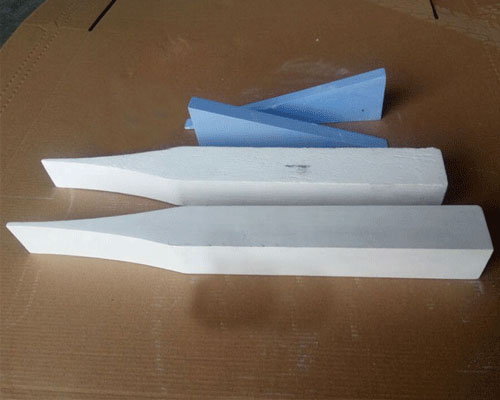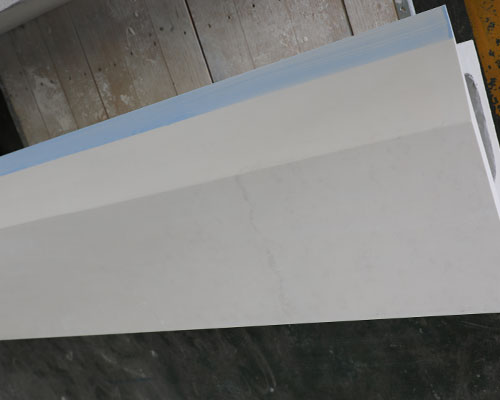Feeding Tip Cavity is widely used in Aluminum Sheet Casting and hot rolling aluminum coil. It is also called Castertip, Tip Cavity, Nozzle Cavity, Casting Spile, Caster Tip, Casting Tip, Casting Nozzle, Caster Nozzle.
Feeding Tip Cavity Installation Process
Fix the casting nozzle in the nozzle clamp of the steel structure, and then fix the nozzle clamp on the Feeding Tip Cavity platform. The nozzle platform’s in/out and up/down position adjustment can be carried out simultaneously or separately.
When the vertical plate swings the roll gap, first adjust the horizontal adjustment screw jack of the casting nozzle platform to the maximum stroke, and then the oil cylinder drives the casting nozzle platform toward the roll gap at a faster speed. When the front end of the casting nozzle is away from the center line of the roll At 120mm, at this time, the baffle of the casting nozzle platform is pressed on the top plate of the screw elevator, and then the casting nozzle platform is driven by the servo motor to slowly approach the roll to adjust the casting nozzle to the target position.
When the casting and rolling mill is stopped to change rolls, the oil cylinder brings the mold nozzle platform back to the rear limit position, and the detection signal of the rear limit switch is used as the condition for roll change.

Uses of Soft Ear and Hard Ear Products
The soft ears and hard ears are assembled with the casting nozzle and used for the crystal forming and size control of aluminum plates, strip and foil blanks in casting and rolling production lines.
The soft ear is made of high-aluminum fiber cardboard paste and composite molding materials, and the hard ear is made of high-purity fiber vacuum suction filtration. Both are baked in a kiln and processed by sophisticated equipment.
AdTech soft ears and hard ears are assembled with the nozzle plate. They are mainly used to adjust internal flow resistance and control aluminum alloy forming dimensions. The uniformity of the edges without burrs can effectively protect the castings during the rolling process. The internal structure of the wound coil is stable.

